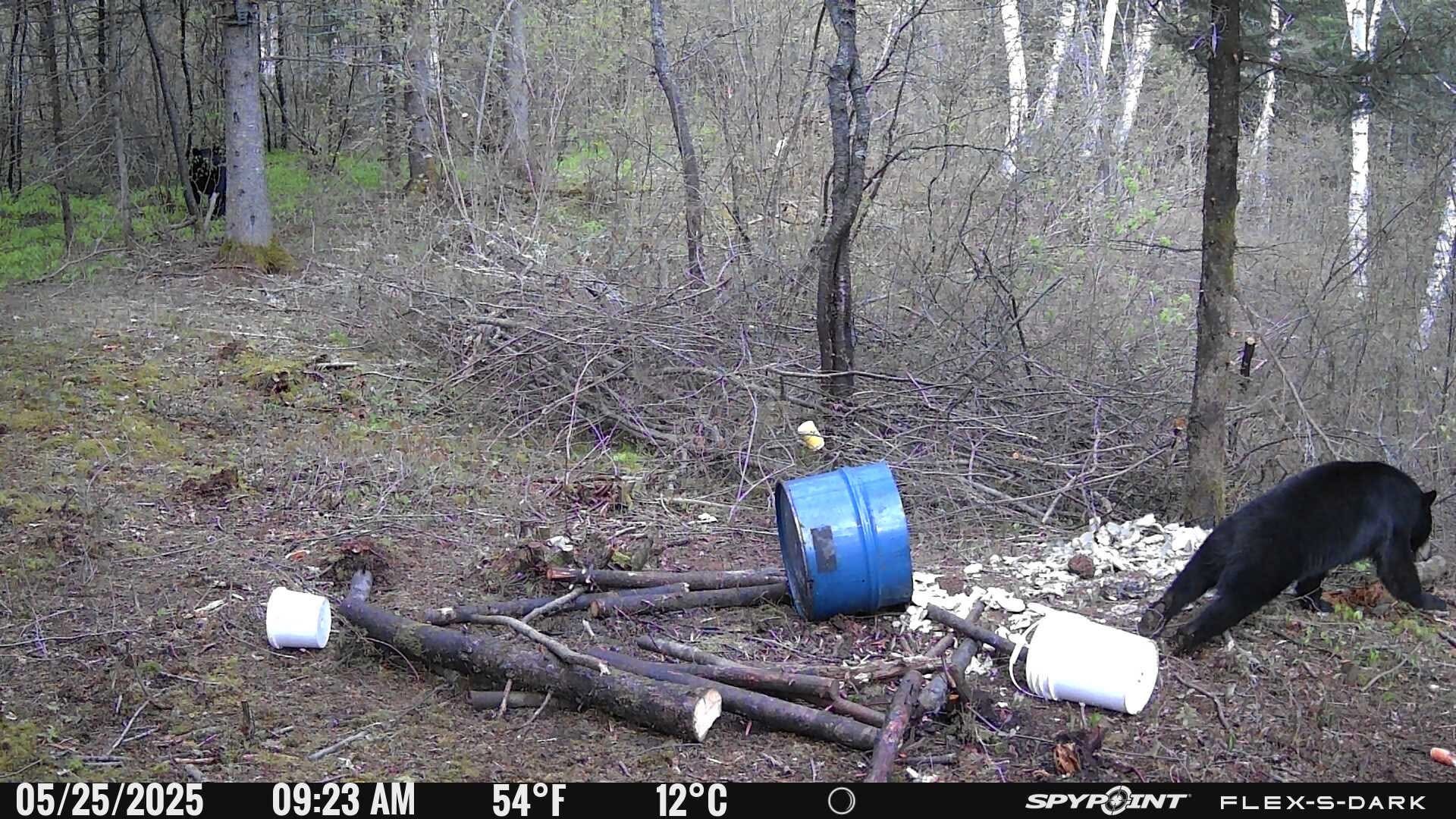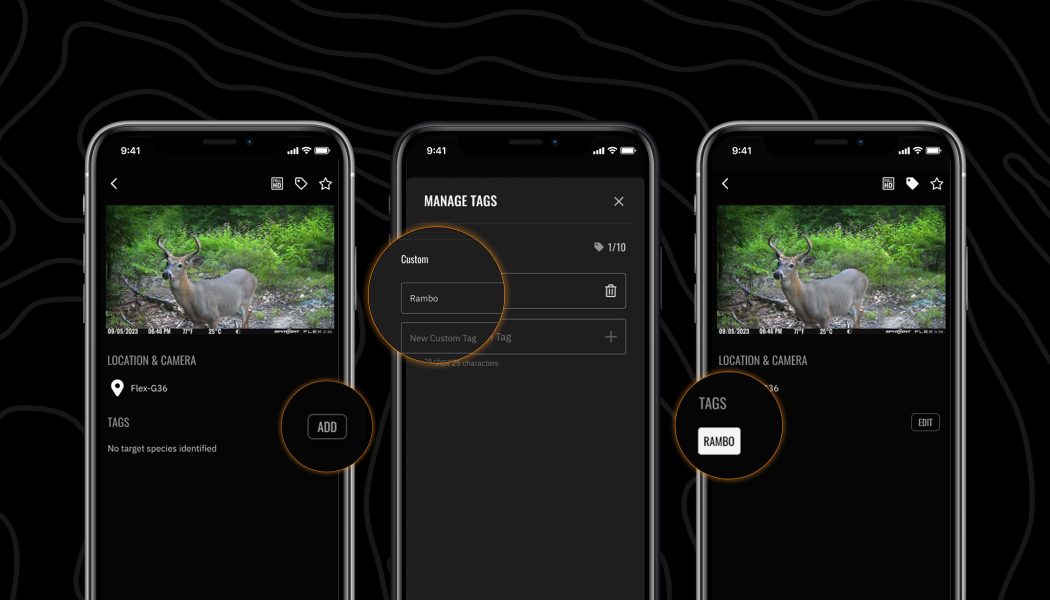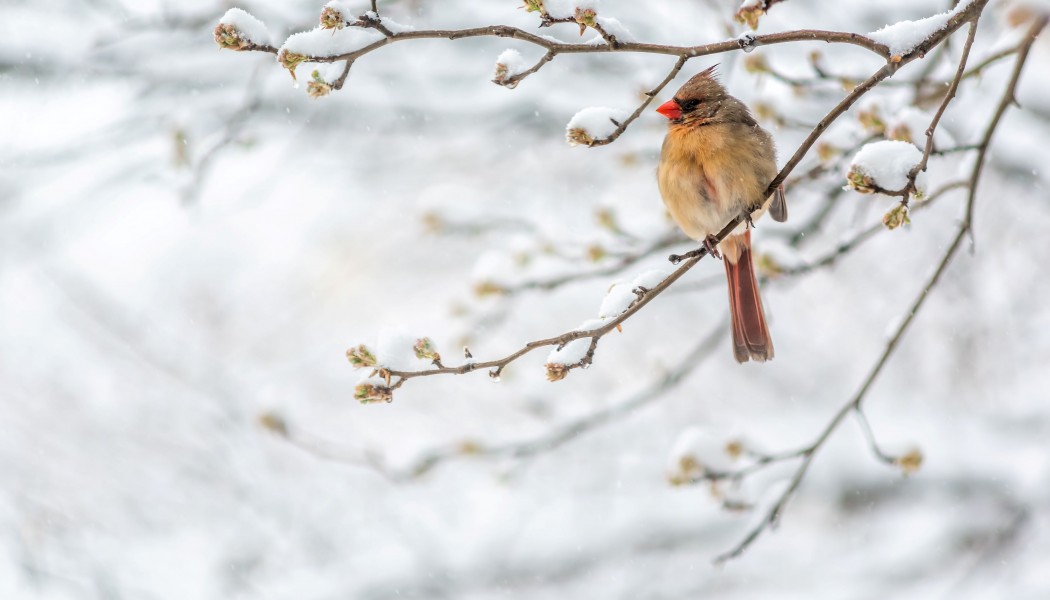
Bird watching is a rewarding way to connect with nature and doing it in the winter offers a unique glimpse into bird behavior during the colder months. With fewer leaves on trees, spotting birds becomes easier, and using cellular trail cameras can take the experience to a whole new level. These cameras can capture up-close, candid shots of birds in their natural habitat and send them straight to your phone, enabling you to observe from anywhere without causing any disturbance—even in the most chilling winter conditions.
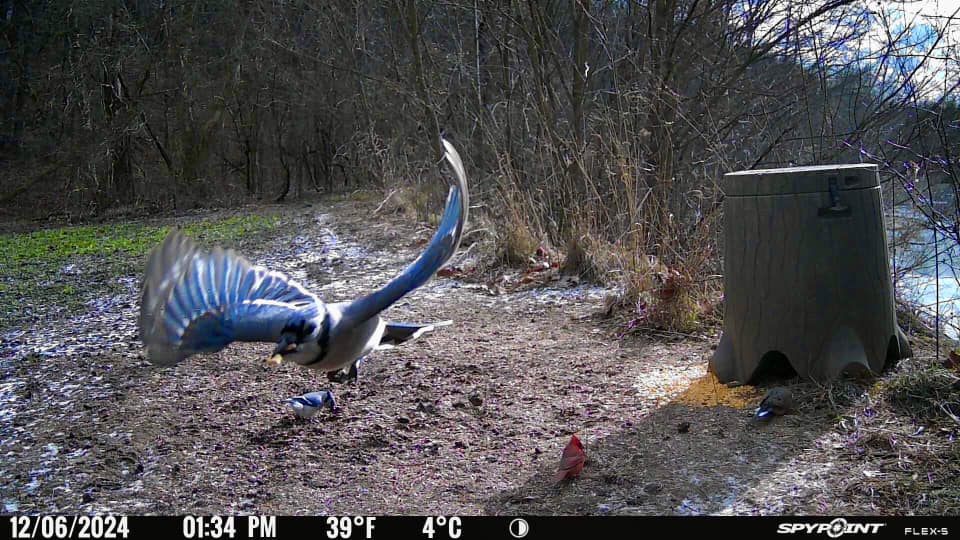 A bluejay flies away from the feeder with a snack in central Ohio. Photo credit: Nick Wise.
A bluejay flies away from the feeder with a snack in central Ohio. Photo credit: Nick Wise.
Why Bird Watching in Winter?
Winter bird watching has its own charm. The sparse foliage makes it easier to spot birds, and seasonal migratory species like juncos and snow buntings add variety. Birds such as cardinals, blue jays, and woodpeckers stand out beautifully against snowy backdrops.
Winter also brings fascinating changes in bird behavior. With limited food sources, birds are more likely to frequent feeders and berry-bearing trees, making them easier to observe. Cellular trail cameras offer a non-intrusive way to watch our feathered friends and are built to withstand harsh weather conditions, ensuring you receive reliable photos and videos to enjoy or share with loved ones, all while you stay dry and warm.
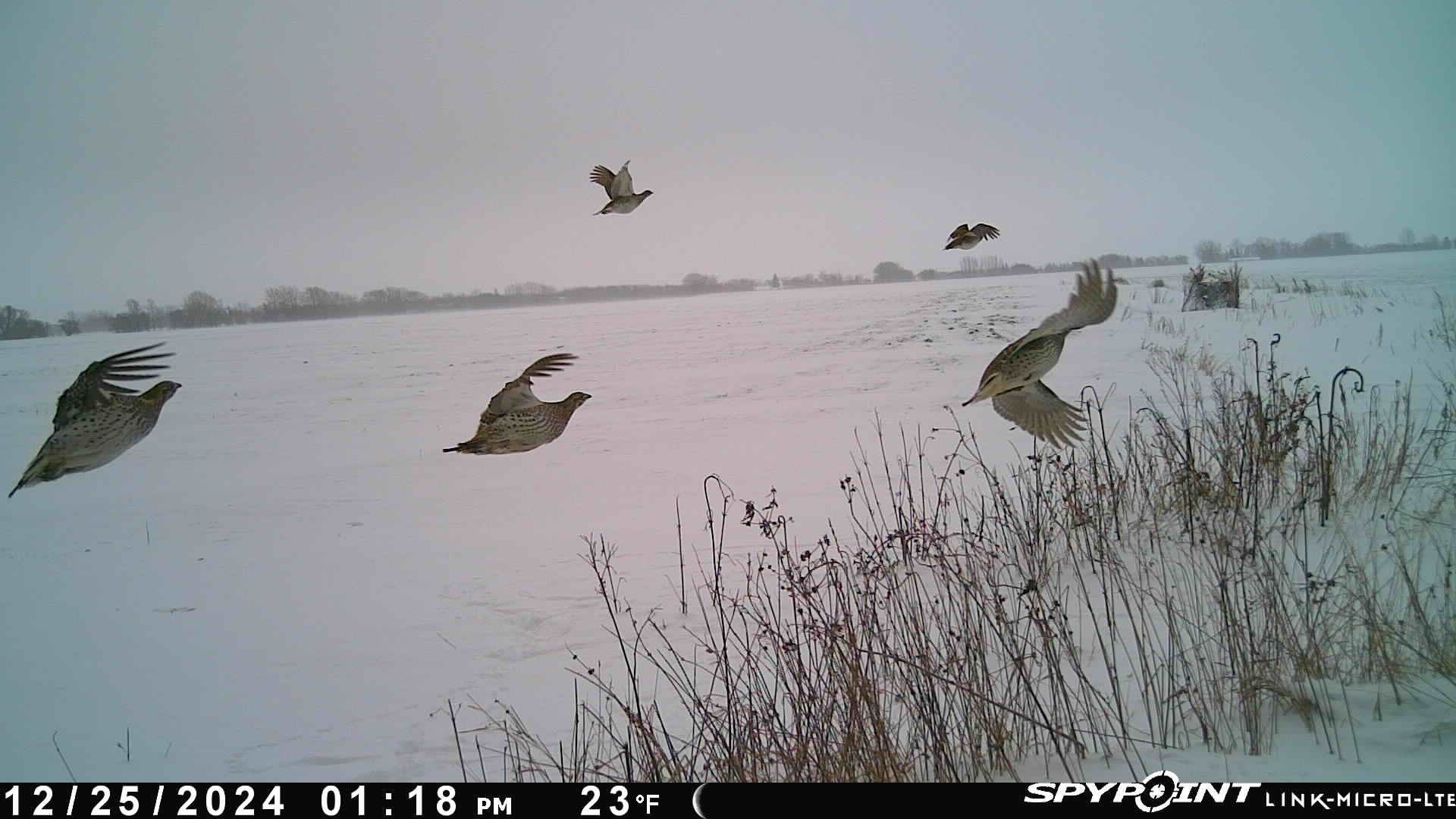 A pack of ruffled grouse travel together in southern Manitoba, Canada. Photo credit: Cam Muron.
A pack of ruffled grouse travel together in southern Manitoba, Canada. Photo credit: Cam Muron.
Choosing the Right Cellular Trail Camera for Bird Watching
Important Camera Features for Bird Photography
• High Resolution: Clear images to capture intricate details.
• Fast Trigger Speed: Essential for catching birds in motion.
• Extended Battery Life: Cold temperatures can drain batteries quickly.
• Robust Manufacturing: A must for enduring snow, ice, and freezing conditions.
Optimal Settings
• Use photo mode for still shots of perched birds or video mode to capture dynamic movements.
• Adjust sensitivity to avoid false triggers but still capture smaller birds.
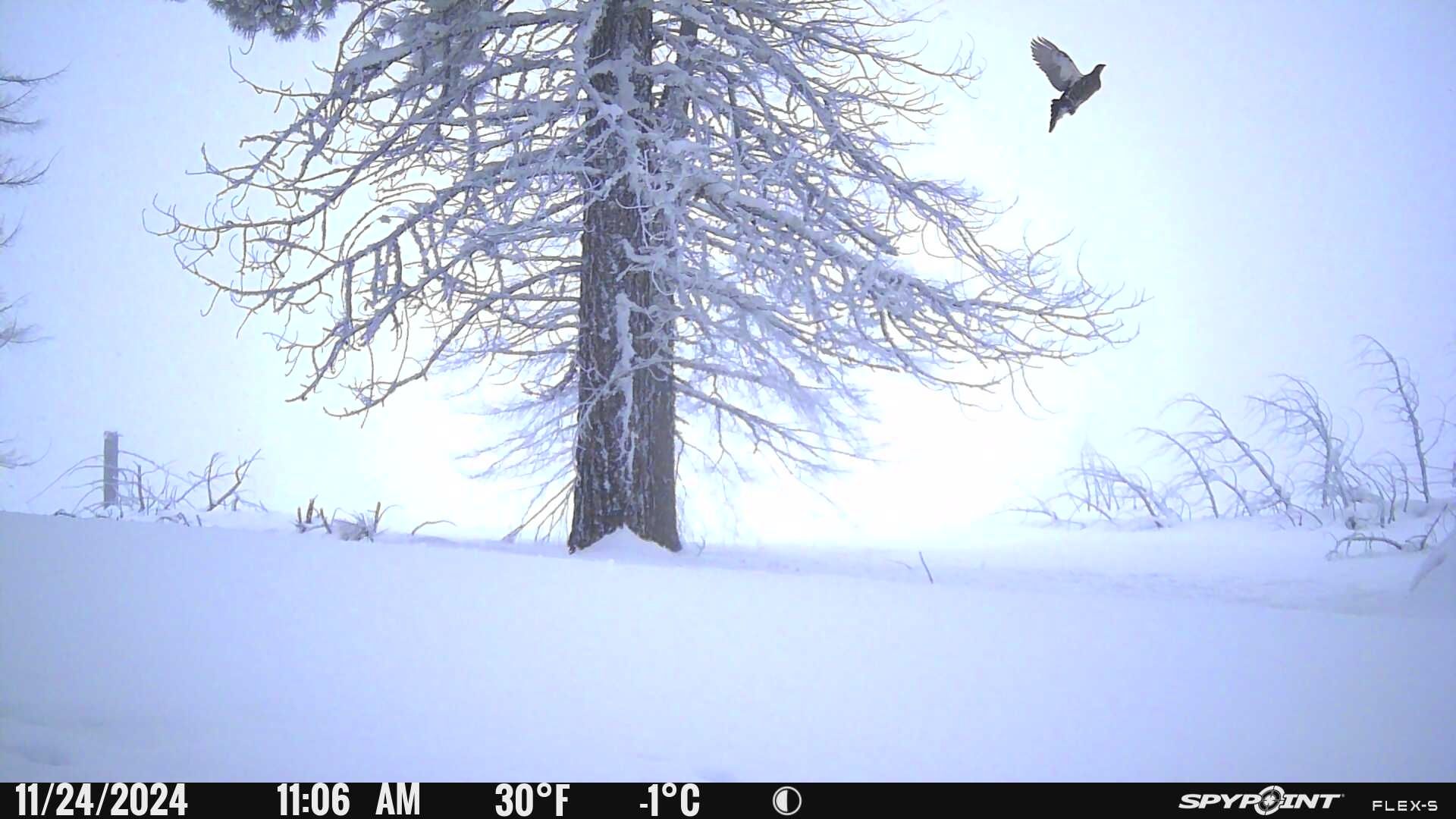 A single grouse takes flight in northeast Washington state. Photo credit: Chris Mccallum.
A single grouse takes flight in northeast Washington state. Photo credit: Chris Mccallum.
SPYPOINT Camera Recommendations
There are several SPYPOINT cellular trail cameras that can be ideal for winter bird watching. The following all feature high-resolution photos and videos, multiple photos modes including multi-shot for photo bursts, quick trigger speeds to capture fast movements and robust manufacturing for reliable cold-weather performance. Here are our recommendations for cameras to bird watch during winter:
1. The FLEX-S
Not only does the FLEX-S offer 36MP high-definition photos and 1080p video with sound, it features an integrated solar panel that charges an internal lithium battery, saving you time and money on regular batteries, which can drain especially fast during winter. Pairing this with a LIT-22 lithium battery pack will give you a substantive edge against the cold. In addition, the FLEX-S offers Instant Mode for on-demand photo and video requests, meaning you can request a photo or video from your camera before its next sync.
2. The FLEX-PLUS
The FLEX-PLUS offers many of the same advantages of the FLEX-S, but features double battery capacity (18 AA batteries or 2 LIT-22 battery packs) instead of a solar panel, which may suit your environment better.
3. The FLEX G-36
The FLEX G-36 offers identical photo and video quality, trigger speed, as well as flash and detection range as the FLEX-S and FLEX-PLUS, but at a price point that is a little easier on the wallet. Go for the FLEX G-36C for a camouflaged face to increase concealment or a twin pack if you want to set up multiple cameras.
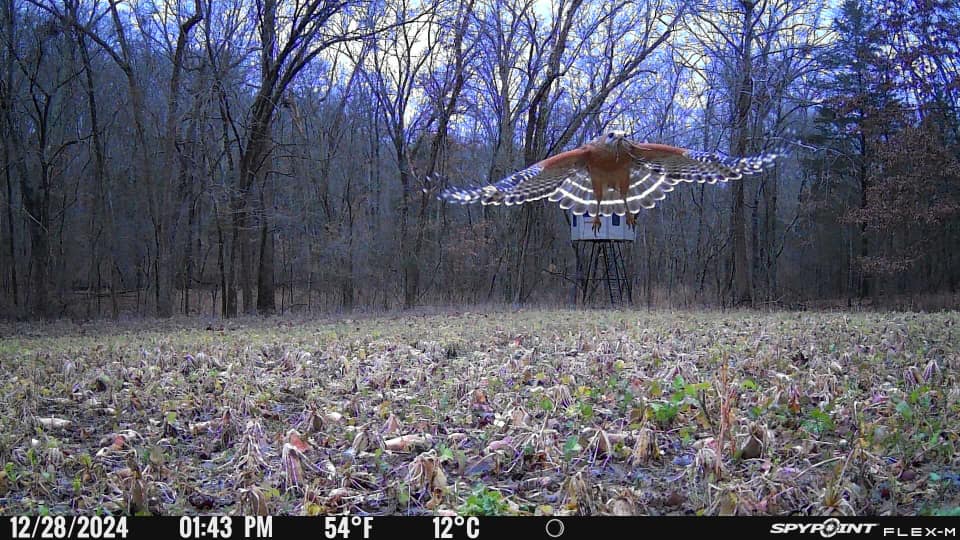 A red-tailed hawk catches a worm in east-central Missouri. Photo credit: Chris Redell.
A red-tailed hawk catches a worm in east-central Missouri. Photo credit: Chris Redell.
SPYPOINT Accessories
LIT-22 Rechargeable Lithium Battery Pack
Don’t forget, winter temperatures can be tough on batteries. The LIT-22 rechargeable lithium battery pack is more resistant to extreme temperatures than regular AA batteries, so if you want to save time and money consider investing in one or two of those.
Solar panels
If you already have a non-solar camera, you can keep it running longer by connecting it to an SPLB-10 or SPLB-22 external solar panel.
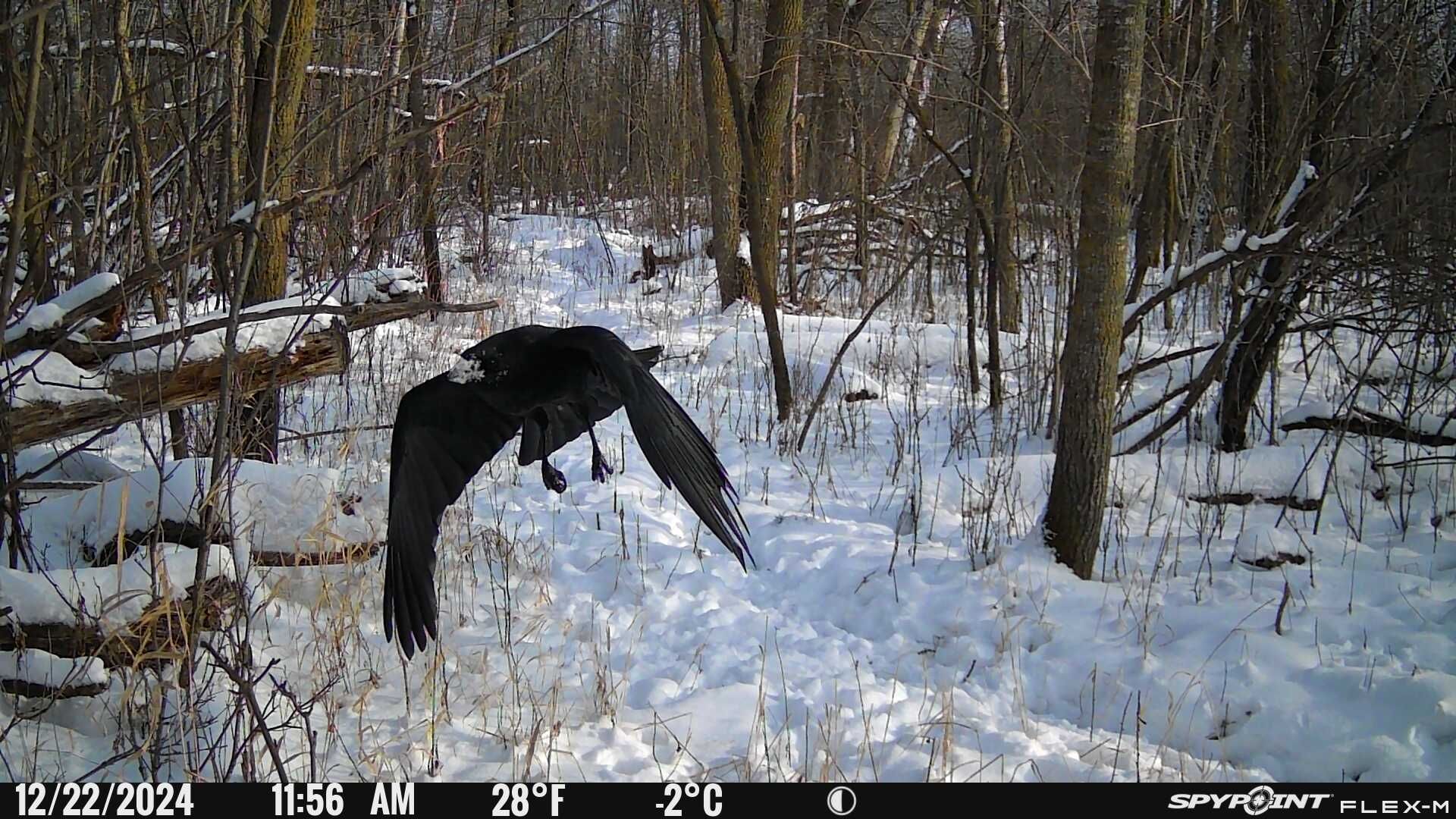 A raven in flight with snow on its beak in central Minnesota. Photo credit: Erik Faue.
A raven in flight with snow on its beak in central Minnesota. Photo credit: Erik Faue.
Ideal Winter Camera Placement for Bird Watching
Strategic Locations
• Near Feeders: High activity zones for consistent bird presence.
• Berry-Bearing Trees: Natural food sources attract birds.
• Open Areas: Ensure visibility while providing some natural cover for better backdrops.
Placement Tips
• Position cameras at the right height and distance to accommodate smaller bird sizes.
• Avoid areas with heavy foot traffic to reduce disturbances.
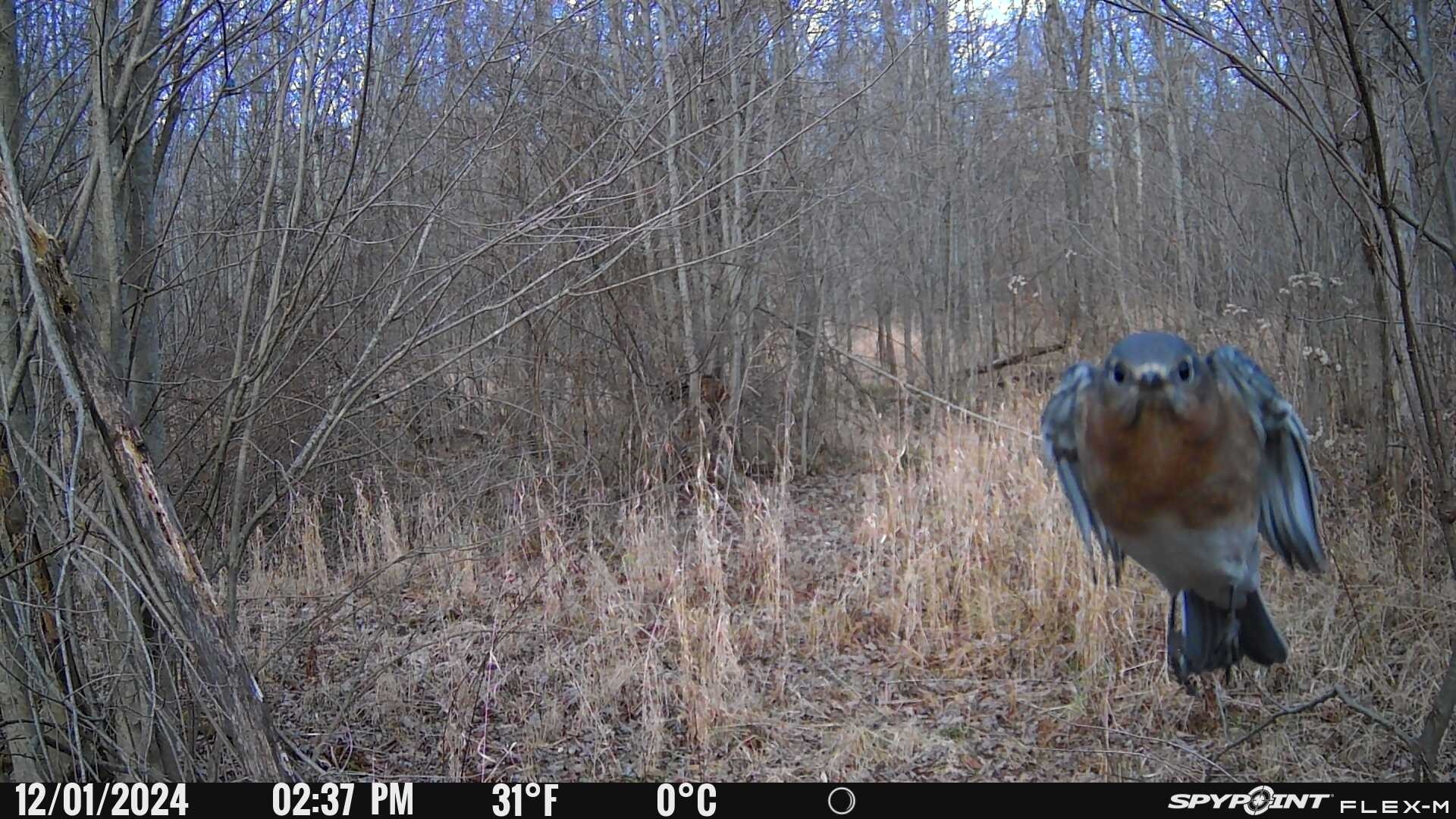 An eastern bluebird shot in Northeast Ohio. Photo credit: Brian Milo.
An eastern bluebird shot in Northeast Ohio. Photo credit: Brian Milo.
Tips for Attracting Birds to Your Cellular Trail Camera Setup
Feeders and Food Options
• Use black-oil sunflower seeds, suet, and other high-energy foods.
• Select feeders that provide clear views for your trail camera and reduce interference.
Natural Attractants
• Plant shrubs or trees that offer shelter and winter berries.
• Consider adding a heated birdbath for a rare winter water source.
 A raven mid-flight in the Upper Peninsula of Michigan. Photo credit: Lance Larock.
A raven mid-flight in the Upper Peninsula of Michigan. Photo credit: Lance Larock.
Analyzing and Enjoying Your Captured Shots
• Review camera footage to identify bird species and understand their behaviors.
• Create a winter birdwatching photo journal to document unique sightings, such as courtship displays or flocking patterns.
• Look for captivating moments like birds interacting with feeders or showcasing territorial behaviors.
To make saving and sorting your shots easier, get the option to tag up to 500 favorite images and access 12 months of transmitted photo history in the SPYPOINT app by joining the Insiders Club today.
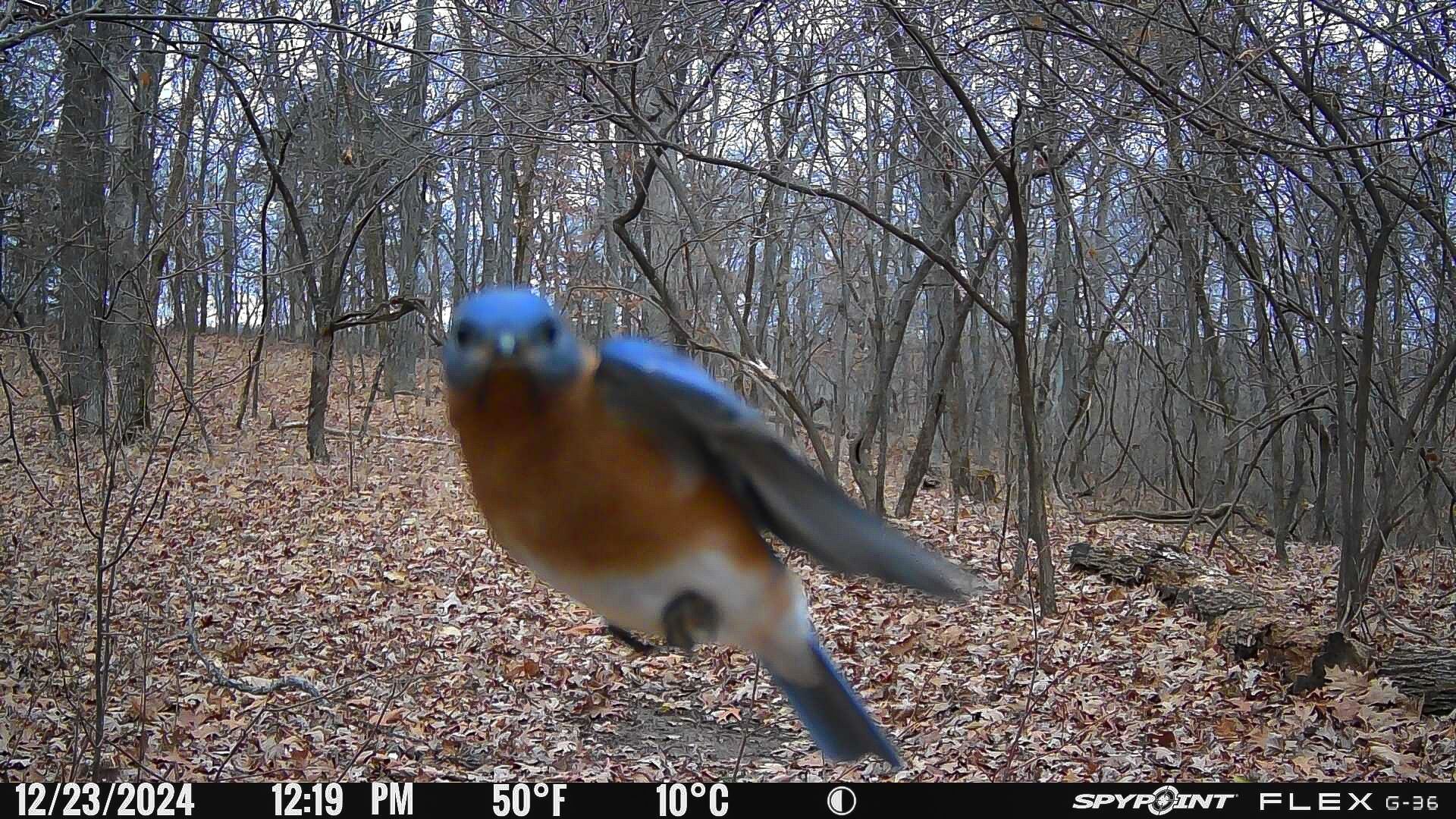 A bluebird, the state bird of Missouri, is captured on cam in east central Missouri. Photo credit: Robin Parks.
A bluebird, the state bird of Missouri, is captured on cam in east central Missouri. Photo credit: Robin Parks.
Using cellular trail cameras for winter bird watching offers an easy and affordable way to add exciting moments to the doldrums of the coldest months of the year. Plus, once you’ve invested in your cellular trail camera, you can use it to enjoy stunning captures any time of year.
